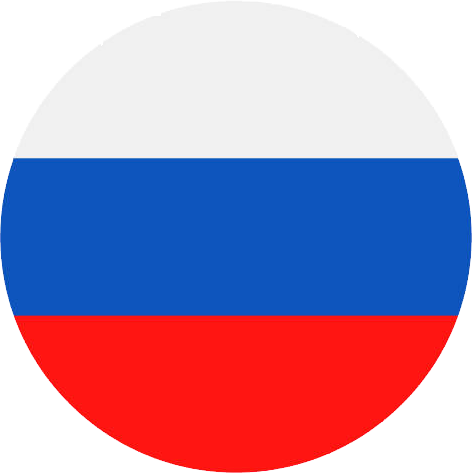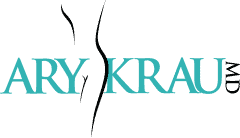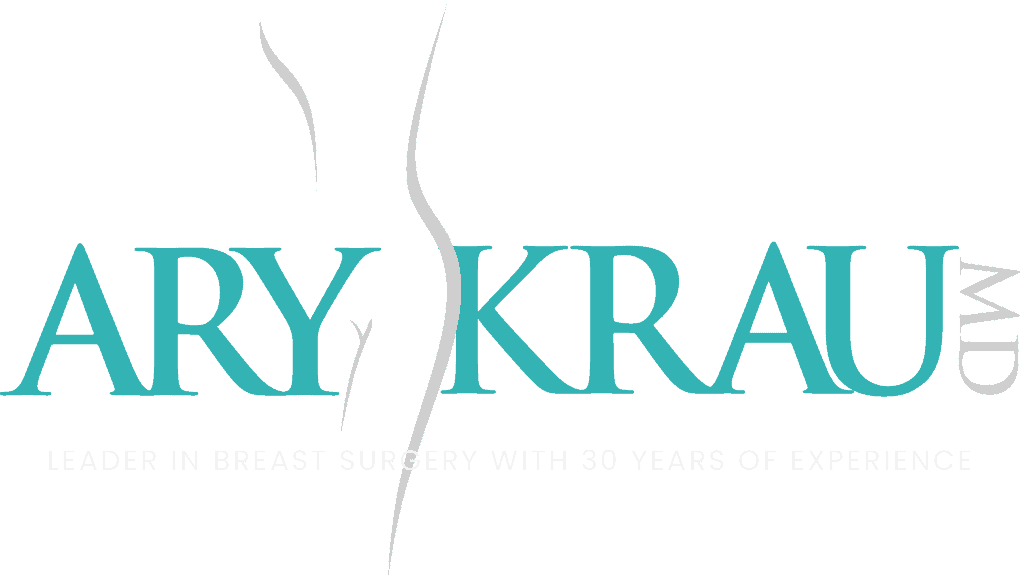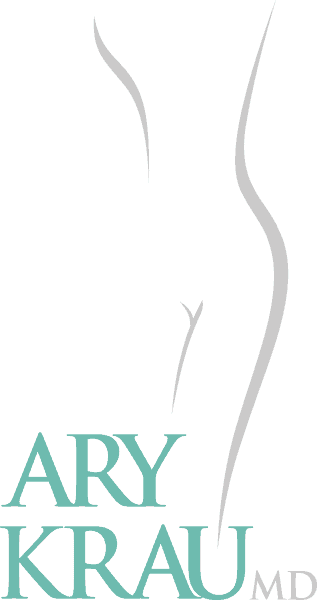
Searching for a great rhinoplasty surgeon in Miami? One of the more demanding plastic surgery procedures, rhinoplasty is also a favorite of Dr. Krau’s. He enjoys the complexities and intricacies involved in planning and executing his vision. “Most plastic surgeons consider rhinoplasty to be the most difficult type of surgery,” he says. “It’s an operation where you’re dealing with fractions of millimeters, but I love doing them. Every nose I do is uniquely created for each face.”
Dr. Ary Krau is considered one of the best rhinoplasty surgeons in Miami. Thanks to Dr. Krau’s first-class reputation as a top nose surgeon in Miami, patients from all over South Florida travel to his office to get the best rhinoplasty results.
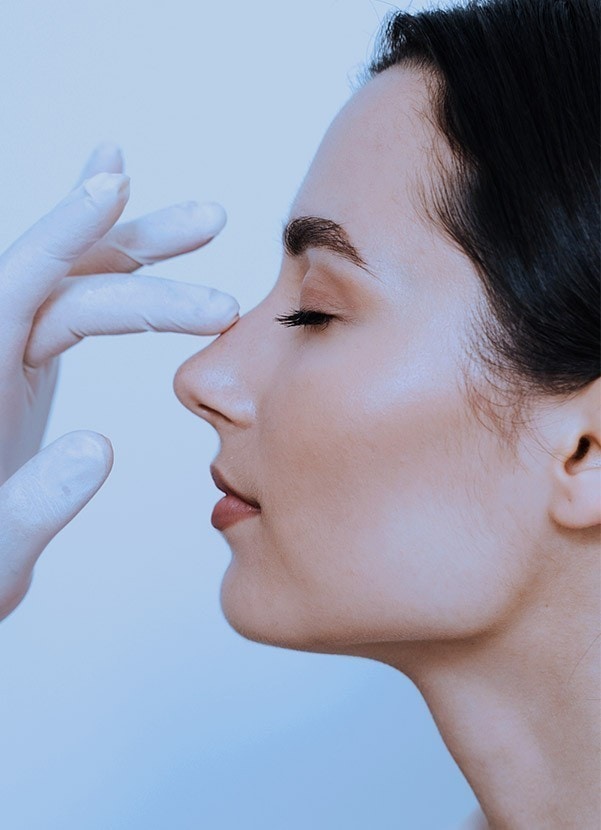
What Can A Nose Job Correct?
Dr. Krau can improve a multitude of cosmetic and functional concerns within the nose, including:
- Oversized, crooked or wide nose
- Nasal profile with a visible bump or depression on the bridge
- Nasal tip that is bulbous, droopy or upturned
- Nostrils that are uneven or oversized
- Anatomical abnormality (e.g., deviated septum) that obstructs normal breathing function
Am I A Candidate For Rhinoplasty?
The two main reasons for getting a nose job are cosmetic concerns, or breathing issues. You may be a good candidate for rhinoplasty if an element of your nose’s appearance bothers you – like the size, or the shape — or if you are having trouble breathing normally through your nose because of its irregular structure. A deviated septum is the most common irregularity that leads to non-cosmetic nose surgery.
You should be in good physical and psychological health and not smoke (or quit prior to surgery). It is important that you have reasonable expectations of surgery and are seeking improvement, not perfection. Informed patients with reasonable expectations are usually the most satisfied with the results. Dr. Krau will explain what rhinoplasty can and cannot achieve, and help you establish realistic surgical goals, during your surgical consultation. He may also discuss chin augmentation as an option to help you achieve your aesthetic goals.
Your Initial Rhinoplasty Consultation
There are several goals of the rhinoplasty consultation. First, Dr. Krau will perform a physical examination of your nose, looking at factors like the thickness and elasticity of your skin. He will ask you to identify what you do not like about your nose, and to describe your ideal outcome.
Based on this information, Dr. Krau will start to conceptualize your rhinoplasty and desired results. This is one of Dr. Krau’s favorite parts of rhinoplasty. “I like to design a nose that both the patient and I are striving for,” he says, when explaining his approach to rhinoplasty.
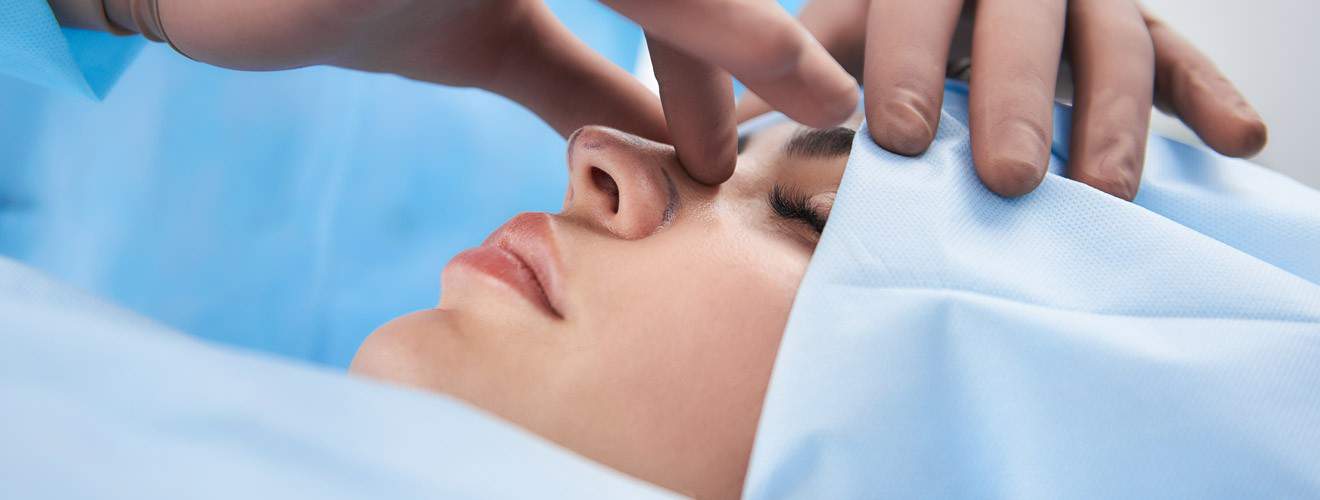
Open vs Closed Rhinoplasty Approach
Rhinoplasty can be performed in one of two ways:
- Closed (endonasal) approach: the incisions are made inside of the nostrils, thereby eliminating the chance of visible scarring
- Open approach: requires an additional incision across the strip of skin separating the nostrils
The open approach allows the surgeon to “un-roof” the skin of the nose and see the underlying nasal anatomy. The surgeon then has the freedom to manipulate the cartilage — for example, remold it or add a graft — and then re-drape the skin over the modified cartilage. Many surgeons enjoy the freedom to mold the nasal structures.
However, Dr. Krau has unique point of view that doesn’t necessarily line up with surgeons’ traditional preferences. Open rhinoplasty can help the surgeon do a lot of things, but not necessarily to the benefit of the patient, he believes.
Patients don’t complain about how their cartilage or bone looks, Dr. Krau says. Rather, they complain about a bump on the nose.
“We’re not operating on the cartilage complaints of the patient; we’re operating on what {their} outside complaints are … What you do on the inside doesn’t necessarily translate to what you see on the outside, even though it gives the surgeon more freedom,” he says.
Dr. Krau ascribes to the motto “less is more” and believes that in many cases, it is not necessary to open up the nose and thereby expose patients to increased swelling, more scar tissue and other variables. Whenever medically possible, he prefers to use the closed approach.
This isn’t to say that the open approach is verboten — Dr. Krau may choose to employ that approach for bigger noses or difficult cases, where he needs greater access to the nasal structures.
How Rhinoplasty Works
Rhinoplasty is performed on an outpatient basis at a state-of-the-art, fully accredited surgical facility. You will receive sedation and anesthesia medications to remain comfortable throughout the duration of the procedure.
Dr. Krau will make the surgical incisions inside the nostrils (he may add the additional incision across the columella). Through the incisions, he will make the necessary surgical modifications. Depending on the case, this could include smoothing a bump on the bridge of the nose, refining the nasal tip, reducing the size of the nostrils or otherwise altering the cartilage and bone of the nose to improve its appearance. This method allows Dr. Krau to get the best possible nose job results.
When Dr. Krau has finished, he will close the incisions with sutures and place a surgical bandage.
Recovering From Rhinoplasty
After surgery, you will rest in the recovery suite while the effects of the anesthesia wear off. When you’re ready, we will release you from the facility. A companion should drive you home and help you get into a comfortable position on the couch or in bed, with plenty of liquids, soft foods and medication nearby.
Initially, the nose will be swollen and bruised. You may have some bruising around your eye area, too. The majority of the swelling and bruising will subside within a few weeks. If you experience any pain, you can take prescription pain medication as directed by Dr. Krau.
Avoid any strenuous activity that could increase the risk of bleeding or another post-operative complication. Short walks are good for circulation, but vigorous activities should be avoided.
Dr. Krau will be very involved in your follow-up care. He will see you shortly after your surgery to check your healing progress, remove any sutures and advise when it is safe for you to return to work, exercise and other normal activities.
Miami's Best Plastic Surgeon
Best Plastic
Surgeon 2022
Voted by the reader of Miami New
Times, Best Plastic Surgeon 2022!
What Are The Risks Of Rhinoplasty?
All surgical procedures carry some degree of risk. However, an experienced surgeon significantly decreases the chances that a complication will arise. With Dr. Krau, you can rest assured that you are receiving exceptional care, and that abnormalities are rare and will be addressed immediately.
Potential risks include:
- Bleeding
- Infection
- Changes in skin sensation
- Breathing obstruction
- Poor wound healing
- Skin discoloration
Rhinoplasty Costs And Financing
The cost of rhinoplasty varies from $5,000 to $15,000. Your specific rhinoplasty pricing will depend on the details of your treatment plan.
Dr. Krau is careful to keep rhinoplasty costs affordable and competitive. It’s important that his patients understand they are receiving an incredible value: a board certified surgeon’s services at a fair price.
Rhinoplasty financing is available through companies like CareCredit and MyMedicalLoan.com. We would be happy to provide more details if you’re interested.
Rhinoplasty FAQ
- When are the results of rhinoplasty visible?
- Are results permanent?
- When will I feel comfortable going out in public after rhinoplasty?
- Will insurance cover the cost of rhinoplasty?
- Can I be too old or too young to have rhinoplasty?
- Will rhinoplasty improve my breathing?
- What kind of scarring can I expect from rhinoplasty?
- Does Dr. Krau perform revision rhinoplasty?
- Can rhinoplasty be combined with other facial surgeries?
- What is a liquid nose job?
WHEN ARE THE RESULTS OF RHINOPLASTY VISIBLE?
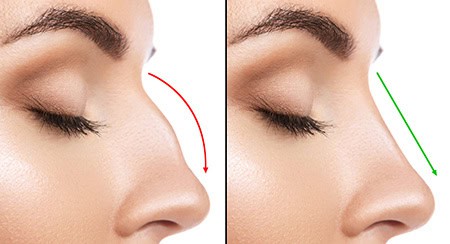
ARE RESULTS PERMANENT?
The results of rhinoplasty can be considered permanent. However, the nose will continue to age after surgery, just like any other part of the body.
WHEN WILL I FEEL COMFORTABLE GOING OUT IN PUBLIC AFTER RHINOPLASTY?
Bruising and initial swelling will improve about two weeks after surgery. In the meantime, you can apply makeup to the bruised area, if necessary, starting about three to five days after surgery.
WILL INSURANCE COVER THE COST OF RHINOPLASTY?
Depending on your insurance plan, the cost of reconstructive rhinoplasty may be partially or fully covered by insurance. Typically, insurance companies will cover the cost of rhinoplasty when it is performed to correct a structural deformity that is causing chronic breathing or sinus problems, or to correct nasal irregularities caused by injury or trauma to the nose.
CAN I BE TOO OLD OR TOO YOUNG TO HAVE RHINOPLASTY?
Rhinoplasty can be performed on patients once the nasal bone has fully developed, which typically occurs around age 15-17 for females and 17-19 for males. Regarding the upper age limit, there is no defined cutoff for rhinoplasty as long as the patient is in good overall health. Older patients should undergo a thorough medical evaluation to determine their candidacy for this elective surgery.
WILL RHINOPLASTY IMPROVE MY BREATHING?
Most of the nose reshaping surgeries that Dr. Krau performs are cosmetic in nature and therefore are not meant to affect breathing. However, rhinoplasty certainly can improve breathing by correcting structural abnormalities of the nose. This includes straightening a deviated septum or reducing nasal turbinate size, which can obstruct air flow. If you experience chronic nasal congestion or breathing difficulties, you may benefit significantly from functional rhinoplasty, a procedure aimed at enhancing nasal function. Dr. Krau evaluates both the aesthetic and functional aspects of the nose to provide comprehensive care. Elements of cosmetic and functional rhinoplasty can be combined into a single procedure.
WHAT KIND OF SCARRING CAN I EXPECT FROM RHINOPLASTY?

DOES DR. KRAU PERFORM REVISION RHINOPLASTY?
Revision rhinoplasty is a procedure conducted to correct or refine the results of a previous nose surgery. It is typically more complex than a primary rhinoplasty due to changes in the normal anatomy and potential scar tissue. Choosing an experienced and highly skilled surgeon like Dr. Krau is crucial because revision procedures require advanced techniques and a deep understanding of nasal structure. Dr. Krau’s expertise ensures that patients achieve the best possible outcome by addressing both functional and aesthetic concerns that may have arisen from prior surgeries.
CAN RHINOPLASTY BE COMBINED WITH OTHER FACIAL SURGERIES?
Yes, rhinoplasty can be combined with other procedures such as chin augmentation, facelift, or eyelid surgery to achieve a more comprehensive facial transformation. Combining surgeries can provide a more balanced and harmonious result. Dr. Krau evaluates each patient’s facial structure and aesthetic goals to recommend the best combination of procedures for optimal outcomes.
WHAT IS A LIQUID NOSE JOB?
A liquid nose job, or non-surgical rhinoplasty, involves using injectable fillers to alter the shape of the nose without invasive surgery. This procedure can address issues like smoothing out small bumps, refining the nasal tip, or improving nasal symmetry. However, the results are temporary, typically lasting six to 18 months, and are not a substitute for traditional rhinoplasty. This option might be suitable for individuals looking for minor adjustments or those not ready for surgery. Dr. Krau provides consultations to discuss the benefits and limitations of liquid nose jobs and to determine the best approach for achieving each patient’s aesthetic goals.
Schedule A Rhinoplasty Consultation
If you’d like to learn more about rhinoplasty, please call our office at (305) 861-6881 and schedule a consultation with Dr. Krau.



